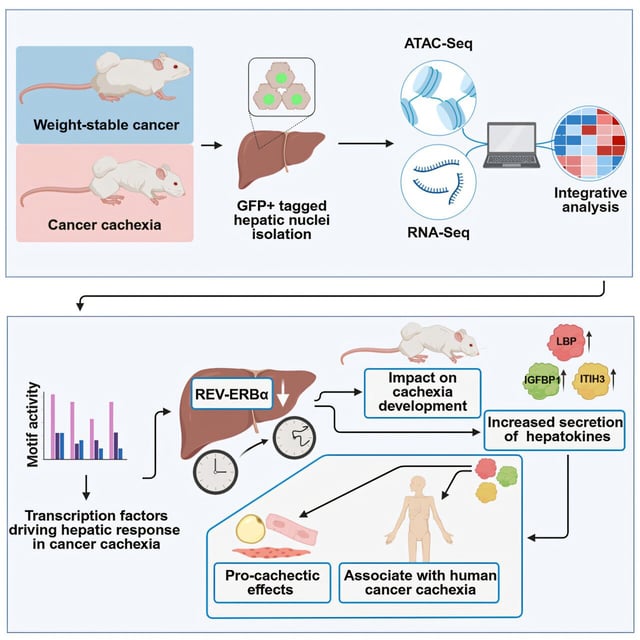Overview
- Liver-specific activation of the circadian regulator REV-ERBα in cachectic mouse models cut body mass loss by restoring normal metabolic rhythms.
- Loss of REV-ERBα function in the liver triggers elevated release of hepatokines LBP, ITIH3 and IGFBP1 that drive catabolic processes in muscle and fat cells.
- Targeted inhibition of LBP, ITIH3 and IGFBP1 in preclinical experiments substantially diminished tissue degradation, highlighting their promise as therapeutic targets.
- Levels of the three hepatokines were markedly elevated in blood samples from cancer patients with cachexia, supporting their use as potential diagnostic biomarkers.
- A comprehensive dataset detailing hepatic molecular networks and cell-type changes in cachexia has been made publicly available to accelerate biomarker validation and drug development.
